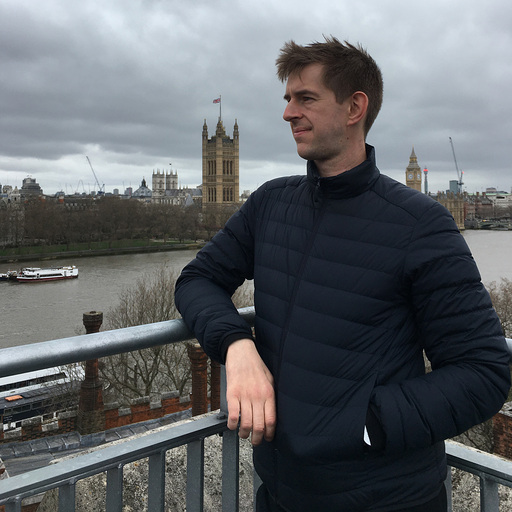The Insane Engineering of South Korea's Spokeless Ferris Wheel
- Youtube Views 621,470 VIDEO VIEWS
Video hosted by Fred Mills.
This article was amended on 31 May 2024 to clarify technical aspects of spokeless wheel designs.
CLOSE your eyes and think of Paris. What comes to mind? Chances are, you thought of the Eiffel Tower. This time, let’s try Sydney. I’ll bet you another shrimp on the barbie that the Sydney Opera House popped into your head. OK now, close your eyes and think of Seoul… Anything?
Don’t get us wrong, we love Korea, it’s got a strong economy, great food and brilliant films – although, shame about the music. But for all its cultural clout, its capital city is lacking the kind of iconic landmark that secures it a place in the big league of global cities.
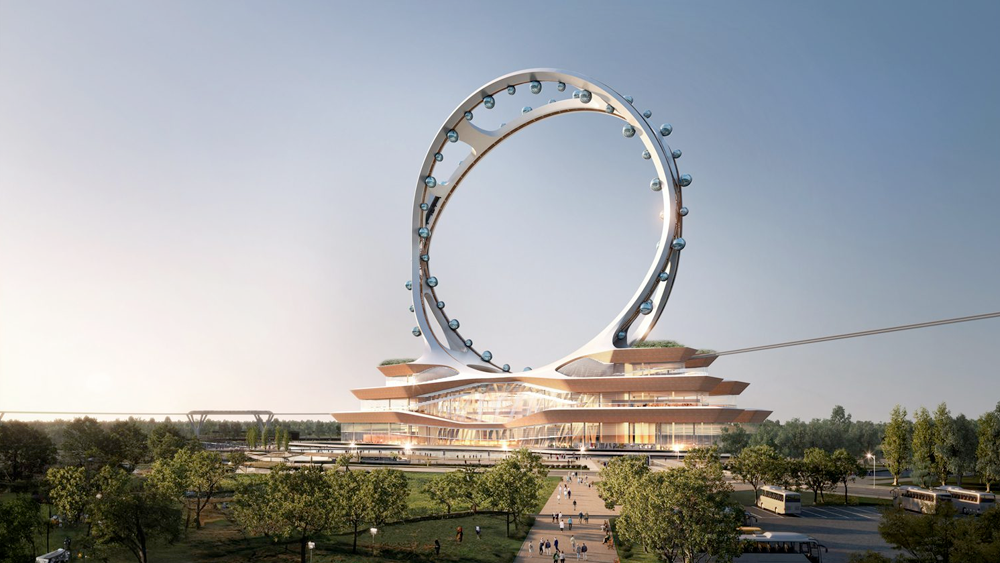
Above: The Seoul Twin Eye. Courtesy of UNStudio.
That’s what’s behind the decision to build the Seoul Twin Eye, a new spokeless Ferris Wheel unveiled in December 2023. But there’s another part of this story which, unless you’ve got a keen eye for architectural controversies, you might have missed…
But before we get to that… how on earth do you build a spokeless Ferris wheel?
The gondolas on a spokeless wheel all sit on wheel sets, which are then linked together like a train. These are independently powered and collectively drive the chain, but the wheel they sit on remains still.
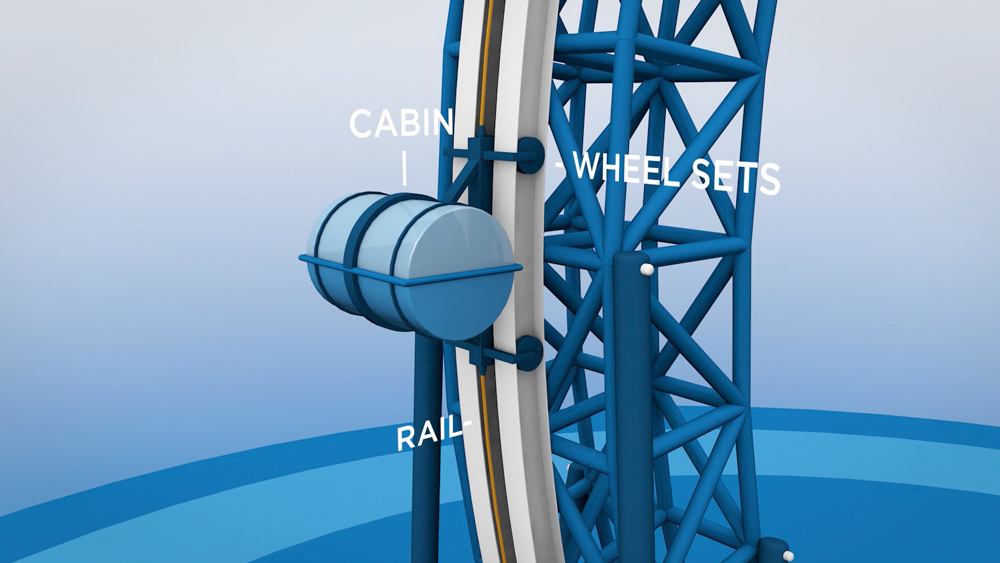
Above: On a spokeless wheel, cabins set on self powered wheelsets.
The first spokeless wheel opened in Tokyo in 2003 but they’re still pretty rare. Still though, that’s not stopped designers from pushing the limits.
In 2017, the title of the world’s tallest, spokeless Ferris wheel was handed to the Bailang River Bridge Ferris Wheel in China, which was built to give the city of Weifang an iconic landmark, which brings us full circle back to Seoul.
To pick a world class design for the new landmark, an international competition was launched, attracting submissions from 181 teams, only this isn’t what gave us the Twin Eye, this is way back in the year 1999.
With the new millennium just around the corner and South Korea acting as joint host of the 2002 FIFA World Cup, the Korean government launched a competition to create a new symbol for the nation.
The winning entry was the Seoul Ring, from the relatively unknown team of architect Lee Eunseok and the studio O’pus Architects.
They proposed a truly breathtaking monument to the new millennium. An enormous freestanding circle standing at one end of Nanjido Peace Park, the centrepiece of the 2002 World Cup in Seoul.
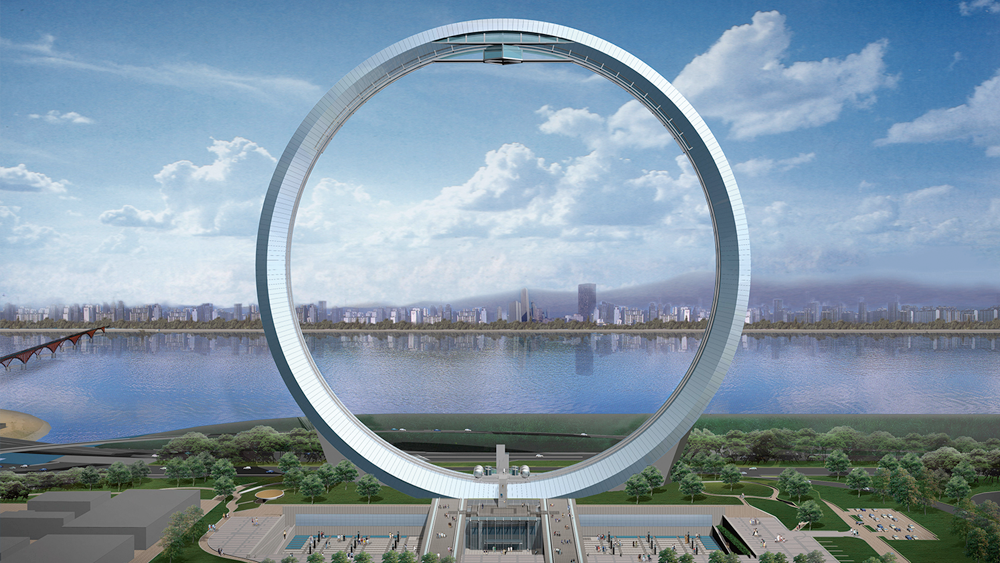
Above: The original Seoul Ring, announced in 2000. Courtesy of Lee Eunseok + Opus.
It would have been the first building of its type in the world and at 200 metres high, taller than anything similar today. It contained an observation deck at the top and, crucially, featured gondolas on its inside, creating what would be the world’s first spokeless Ferris wheel.
But shortly after it was announced as the winner in 2000, questions began to be asked about the feasibility of its design. A spokeless wheel faces a lot of engineering challenges but one of the biggest is caused by the stress placed on the overall structure by the way pods are linked together.
A train of pods naturally hangs in an vertically, which excerts ovalising forces on the fixed ring. To picture this, imagine how a daisy chain hangs on your arm. A common way this is fixed is by building a support to reinforce the middle of the wheel. This effectively makes the structure work like an arch, which is capable of bearing the weight of the pods without becoming deformed.
This and other problems on the Seoul Ring were eventually solved, but not before the budget for the project had nearly doubled. Citing cost overruns and public opinion, the minister in charge, Kim Han-gil, scrapped the project in March 2001.
But how do we get from there to the world’s first double helix wheel? Well, fast forward to 2023, the local Seoul government announced plans to build a new city landmark and revealed the Seoul Ring Zero, which bears more than just a passing resemblance to the Seoul Ring and was even planned for a site a kilometre away from the original.

Above: The Seoul Ring Zero announced in 2023. Courtesy of Seoul Metropolitan Government.
This is where things get complicated, so it’s worth going back to the start. It took the South Korean government nine years and a lawsuit to pay the architects for their work on the cancelled 2001 wheel. Since then one of its designers, Lee Eunseok, has risen to industry fame and never let go of his dream of building the Seoul Ring.
When the government announced Seoul Ring Zero in March 2023 the row over the original design was reignited. Within a week, the Korea Architects Institute released a statement accusing the Seoul government of plagiarism.
The government rejected this, saying many designs were looked at for inspiration, and that the basic shape was in the public domain. Cue months of very public back and forth between the original designers and the mayor of Seoul.
At one point the mayor claimed to have invited the designers to work on the Seoul Ring Zero, but this claim is disputed by Lee and O’pus. Meanwhile, Lee was still fighting to complete his original design of the Seoul Ring, but to no avail.
Somewhere in late 2023 the Seoul Ring Zero design was dropped and in December, the government announced the Seoul Twin Eye – which it would build with another architecture firm, UNStudio.
Which brings us to today, at the third iteration of Seoul’s dramatic quest to build a giant wheel.
We reached out to Lee Eunsok for comment. He told us that on hearing Mayor Oh’s intention to build a new wheel for Seoul he visited the chief architect of the Seoul government and proposed his original design. He was promised this proposal would be presented to Mayor Oh but didn’t hear anything until the SeoulRing Zero was announced.
He added: “This issue could be viewed by the international architectural community as a significant plagiarism case initiated by a public institution. I firmly believe that respecting intellectual property rights and giving proper attribution are crucial for upholding the integrity and reputation of all parties involved in the architectural and creative fields.”
In response, the Seoul Metropolitan Government told us that their plans to build a new landmark date back to August 2022 and Mayor Oh had proposed the idea of a spokeless wheel.
They say they considered many existing wheels like the Tokyo Big O and acknowledged consulting with Lee over his Millenium Gate design as part of the development process.
They reject the accusation of plagiarism, stating that the Seoul Ring Zero was “created as an example to provide a general direction for the Seoul Ring, whose specific form will be determined through … proposals in the future”
While this may seem implausible, it’s not the first time a wheel designer has been accused of plagiarism, in fact it’s an accusation that ‘s been flying around since they were first invented.
The original Ferris wheel was built in Chicago in 1893 by engineer George Washington Ferris. But shortly after his ride opened he was sued by William Somers who claimed Ferris had copied his patented “Observation Roundabout” which he built the year before.
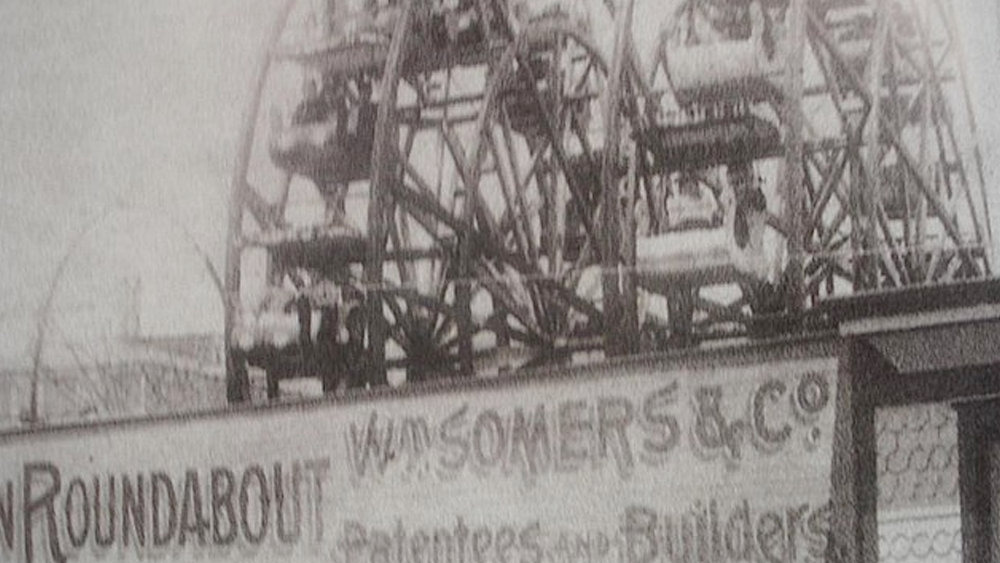
Above: William Somers wheel.
Ferris’ case wasn’t helped when he admitted to having come up with the idea when actually riding Somer’s wheel. Somers won the lawsuit, it was Ferris’ name that stuck and the rest is history.
Development work on the Twin Eye is ongoing, so there may be a few more twists in this tale before anything gets built. Seoul may be a city in search of a landmark, but for now it may have to settle for a monumental row.
Video hosted by Fred Mills. Additional footage and images courtesy of UNStudio, Seoul Metropolitan Government, Lee Eunseok, Opus, 20th Century Fox, CJ ENM Corporation, Barunson E&A, Sony/ATV Music Publishing Llc, Universal Music Publishing Group, BMG Rights Management, Kobalt Music Publishing Ltd, KBS, CGTN, Atelier Koma, Dick Thomas Johnson.
We welcome you sharing our content to inspire others, but please be nice and play by our rules.




